The traditional cast iron kadai is a staple in South Asian and Middle Eastern kitchen and is renowned for its versatility and durability. The kadai is a versatile pan that can be used for a variety of cooking methods, including sautéing, frying, and simmering. Cast iron kadai is also known for its ability to evenly distribute heat, which makes it a popular choice among home cooks and professional chefs alike. In this blog post, we will explore the benefits of cooking with a traditional cast iron kadai and share some delicious recipes that you can try at home. Discover the untold benefits of cooking with a traditional cast iron kadai, from its ability to evenly distribute heat to its versatility in various recipes. Find out why this ancient pan is still popular among home cooks and professional chefs alike!
Table of Contents
- Introducing Traditional Cast Iron Kadai Cooking – History, Benefits & Recipes
- The Health Benefits of Traditional Cast Iron Kadai Cooking
- Variety of Dishes You Can Cook with a Cast Iron Kadai
- Step-by-Step Guide to seasoning your traditional Cast Iron Kadai
- Tips for Maintaining and Cleaning Your traditional Cast Iron Kadai
- Delicious Recipes to Try with your traditional Cast Iron Kadai
Introducing Traditional Cast Iron Kadai Cooking – History, Benefits & Recipes
Welcome to our blog post on traditional cast iron kadai cooking! In this post, we will take you through the history and benefits of cooking with a cast iron kadai, and share some delicious recipes that you can try at home. Cast iron kadai has a long and rich history, dating back to ancient times in South Asian and Middle Eastern cultures. The kadai is a versatile cooking vessel that has been used for centuries to prepare a wide variety of dishes. Today, cast iron kadai is still a popular choice for home cooks and professional chefs alike due to its durability, even heat distribution, and versatility. Whether you are a seasoned cook or just starting out, cooking with a traditional cast iron kadai can take your culinary creations to the next level. So, let's dive in and explore the world of traditional cast iron kadai cooking!
The Health Benefits of Traditional Cast Iron Kadai Cooking
Cooking with a traditional cast iron kadai can provide numerous health benefits. Firstly, cast iron is a naturally non-stick surface when properly seasoned, meaning that you can cook with less oil or fat, making it a healthier option for those looking to reduce their caloric intake. Furthermore, cast iron cookware is known for its durability, and can last for generations with proper care, making it a sustainable and eco-friendly option for your kitchen. By incorporating traditional cast iron kadai cooking into your diet, you can reap the health benefits of increased iron intake and reduced oil usage, while also reducing your carbon footprint.
Cooking with a traditional cast iron kadai has many health benefits that have been recognized for centuries. Here are some of the top health benefits of using a cast iron kadai for cooking:
Chemical-Free Cooking: Unlike non-stick cookware, traditional cast iron kadai does not contain any harmful chemicals that can be released when cooking at high temperatures. This makes it a safer and healthier option for cooking.
Durability: Traditional Cast iron kadai is extremely durable and can last for generations with proper care. This means that you won't have to replace your cookware as often, which is both cost-effective and eco-friendly.
Even Heat Distribution: Traditional Cast iron kadai is known for its ability to evenly distribute heat, which means that your food will cook more evenly and thoroughly. This can help to prevent overcooking or undercooking and can help to retain the nutritional value of your food.
Versatility: A traditional cast iron kadai can be used for a wide range of cooking methods, from sautéing and frying to simmering and roasting. This versatility means that you can prepare a wide range of healthy and nutritious meals using just one pan.
Overall, cooking with a traditional cast iron kadai can offer numerous health benefits, from increasing your iron intake to providing chemical-free cooking and even heat distribution. So why not try incorporating a cast iron kadai into your cooking routine and experience these health benefits for yourself?
Variety of Dishes You Can Cook with a Cast Iron Kadai
The traditional cast iron kadai is a versatile cooking vessel that can be used for a wide variety of dishes. Here are just a few examples of the many dishes that you can prepare using a cast iron kadai:
Curries: Traditional Cast iron kadai is the perfect choice for preparing curries. The even heat distribution and ability to retain heat mean that your curry will cook evenly and stay warm for longer.
Stir-Fries: Stir-frying is a quick and healthy cooking method that is perfect for busy weeknights. Traditional Cast iron kadai is a great option for stir-frying as it heats up quickly and retains heat well.
Fried Rice: Traditional Cast iron kadai is ideal for preparing fried rice, as it allows the rice to cook evenly and develop a crispy texture.
Roasts: Traditional Cast iron kadai can be used for roasting meats and vegetables, as it can be transferred from the stovetop to the oven without any problems.
Frying: Traditional Cast iron kadai is a great choice for frying, as it can maintain a consistent temperature and allows you to fry food evenly and thoroughly.
Baking: Traditional Cast iron kadai can be used for baking, making it a versatile tool in the kitchen. You can use it to prepare everything from cornbread to cakes.
Sautéing: Sautéing is a quick and healthy cooking method that is perfect for vegetables, meats, and seafood. Traditional Cast iron kadai is ideal for sautéing as it heats up quickly and evenly.
Overall, the versatility of a traditional cast iron kadai means that you can prepare a wide range of dishes using just one cooking vessel. So why not try experimenting with your cast iron kadai and see what delicious meals you can create?
Step-by-Step Guide to seasoning your traditional Cast Iron Kadai
Seasoning your traditional cast iron kadai is an important step in caring for your cookware and ensuring that it lasts for generations. Here is a step-by-step guide to seasoning your cast iron kadai:
Wash the Kadai: Start by washing the kadai with warm water and mild soap. Use a sponge or brush to remove any food debris or stubborn stains. Rinse thoroughly with water and dry with a clean towel.
Apply Oil: Once the kadai is dry, use a paper towel to apply a thin layer of vegetable oil or melted shortening to the entire surface of the kadai, including the handles and outside walls.
Heat the Kadai: Preheat your oven to 350°F (180°C). Place the kadai upside down on the middle rack of the oven, with a sheet of aluminum foil or a baking sheet placed on the rack below to catch any drips.
Bake the Kadai: Bake the kadai for 1 hour. After 1 hour, turn off the oven and allow the kadai to cool down completely inside the oven.
Repeat if Necessary: If the seasoning is not to your liking, you can repeat steps 2-4 until you achieve the desired level of seasoning.
Store the Kadai: Once the kadai is fully cooled, store it in a dry place. Avoid stacking other pots or pans on top of it to prevent scratching the seasoning.
Following these steps will help you to achieve a well-seasoned cast iron kadai that is ready to use for cooking delicious meals. Remember to re-season your kadai periodically to maintain its seasoning and prevent rusting. With proper care and seasoning, your traditional cast iron kadai can last for generations and become a beloved family heirloom.
Tips for Maintaining and Cleaning Your traditional Cast Iron Kadai
Maintaining and cleaning your traditional cast iron kadai is essential to keep it in good condition and extend its lifespan. Here are some tips for maintaining and cleaning your cast iron kadai:
Avoid Soap: Avoid using soap when cleaning your cast iron kadai. Soap can remove the seasoning, which is the protective layer that develops over time with proper use and care. Instead, use hot water and a stiff brush to clean the kadai. If necessary, you can use a small amount of salt to scrub away any stuck-on food.
Dry Thoroughly: After cleaning your cast iron kadai, dry it thoroughly with a clean towel or by placing it over a low flame on the stove for a few minutes. Water left on the kadai can cause rusting.
Re-Season as Needed: If your cast iron kadai looks dull or the seasoning has started to wear away, it’s time to re-season it. Follow the seasoning process mentioned in the previous answer.
Avoid Harsh Cleaners: Avoid using harsh chemicals, such as oven cleaner or bleach, on your cast iron kadai. These can damage the seasoning and cause rusting.
Store Properly: Store your cast iron kadai in a dry place to prevent rusting. If you have multiple cast iron pots and pans, stack them with a paper towel or cloth between them to prevent scratching the seasoning.
Use Proper Utensils: Use wooden, silicone, or other non-abrasive utensils when cooking with your cast iron kadai. Metal utensils can scratch the seasoning.
By following these tips, you can keep your traditional cast iron kadai in excellent condition, which will allow you to enjoy its benefits for years to come.
Delicious Recipes to Try with your traditional Cast Iron Kadai
If you're looking for delicious recipes to try with your traditional cast iron kadai, here are a few ideas:
Kadai Paneer: This classic Indian dish is made with chunks of paneer cheese cooked in a spicy tomato-based gravy. The cast iron kadai is perfect for achieving a nice char on the paneer, which adds a great flavor to the dish.
Aloo Gobi: Aloo Gobi is a vegetarian dish made with potatoes and cauliflower cooked with a blend of Indian spices. The cast iron kadai is perfect for evenly cooking the vegetables and creating a crispy exterior.
Chicken Tikka Masala: This popular Indian dish features marinated chicken cooked in a creamy tomato-based sauce. The cast iron kadai is perfect for achieving a nice char on the chicken, which adds a great flavor to the dish.
Tandoori Roti: Tandoori roti is a popular Indian flatbread that's typically cooked in a tandoor oven. However, you can achieve a similar result by cooking the roti in a cast iron kadai. The kadai will help to create a crispy exterior while keeping the interior soft and fluffy.
Biryani: Biryani is a popular Indian rice dish that's often made with chicken, lamb, or vegetables. The cast iron kadai is perfect for cooking the biryani on the stovetop, which allows you to achieve a nice crispy layer of rice on the bottom of the pan.
These are just a few of the many delicious recipes you can try with your traditional cast iron kadai. With its even heat distribution and ability to retain heat, the kadai is perfect for cooking a wide variety of Indian dishes.

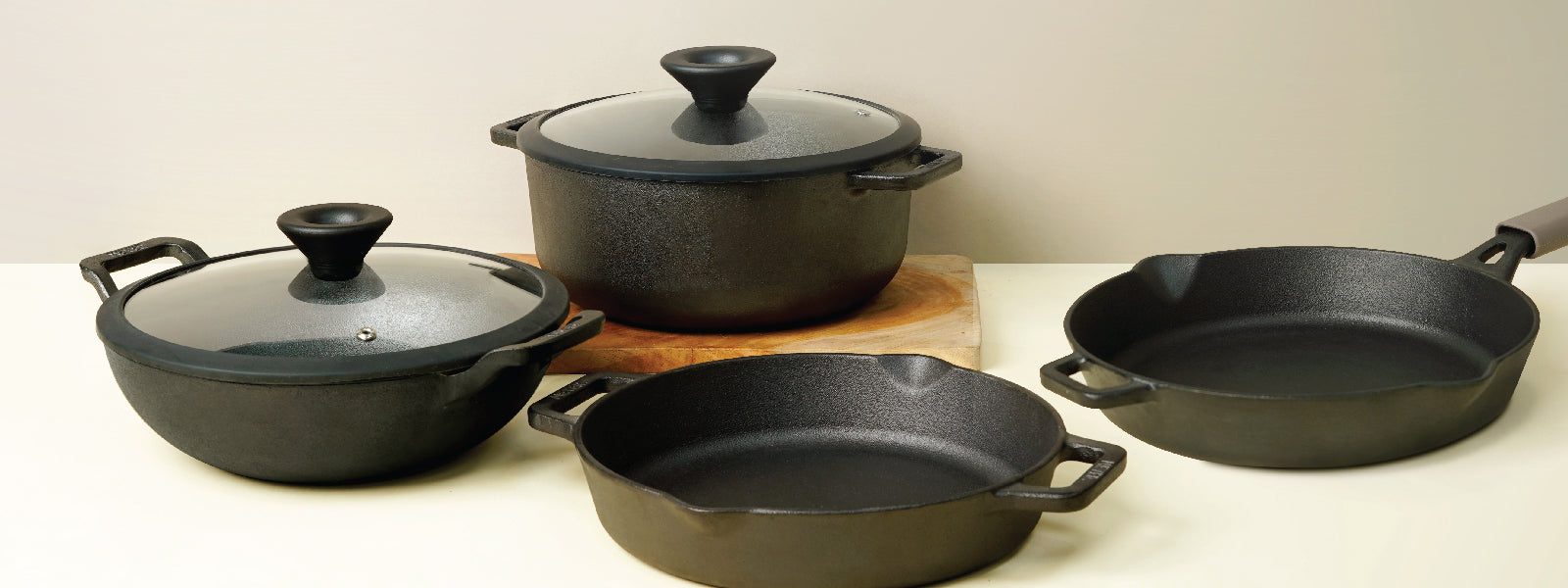
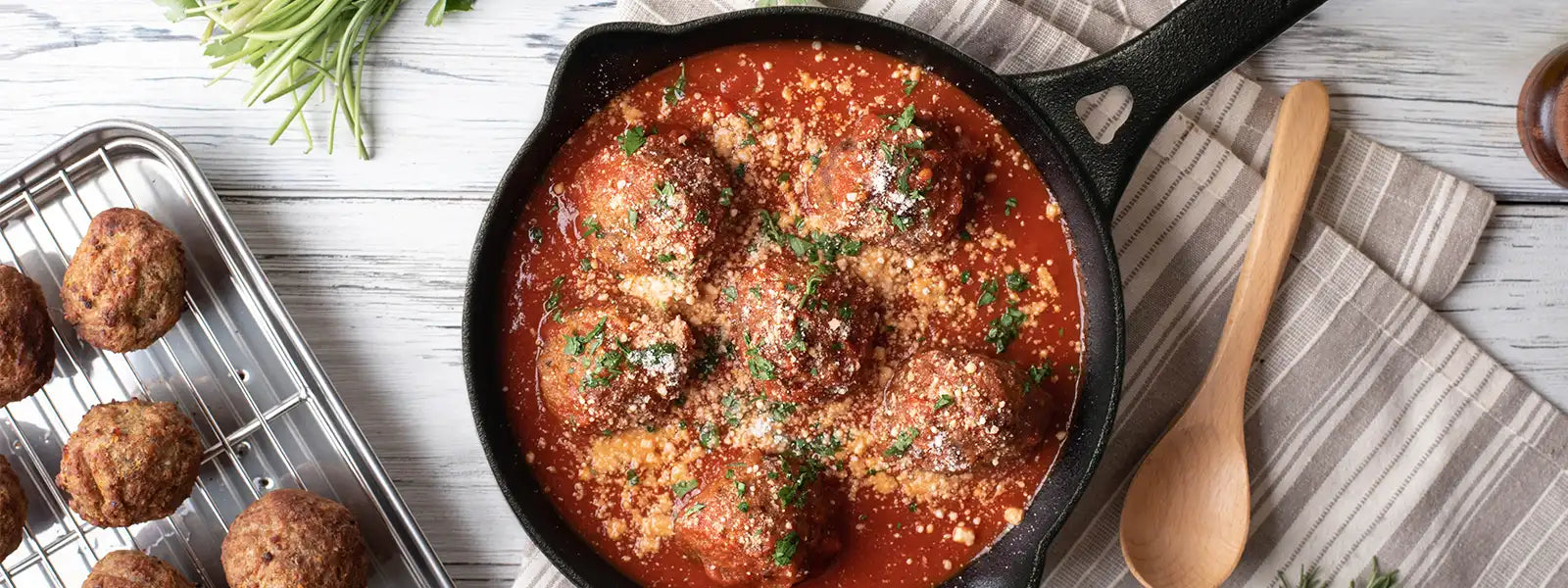
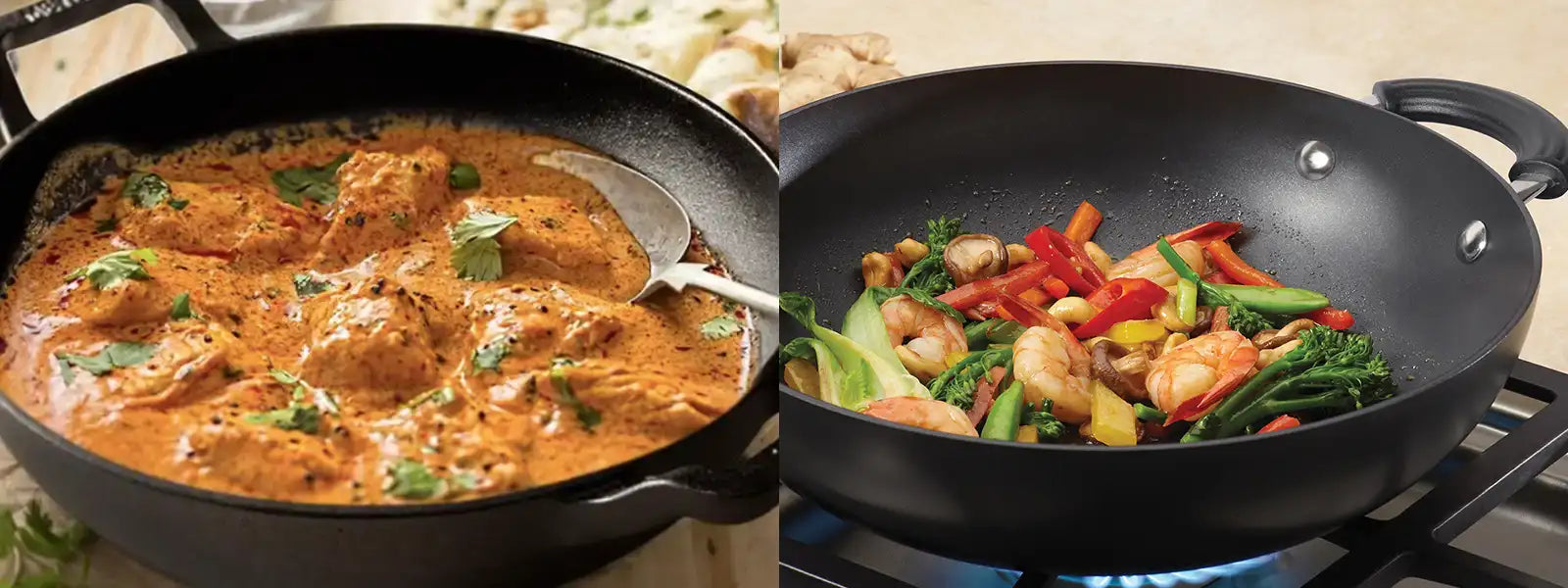
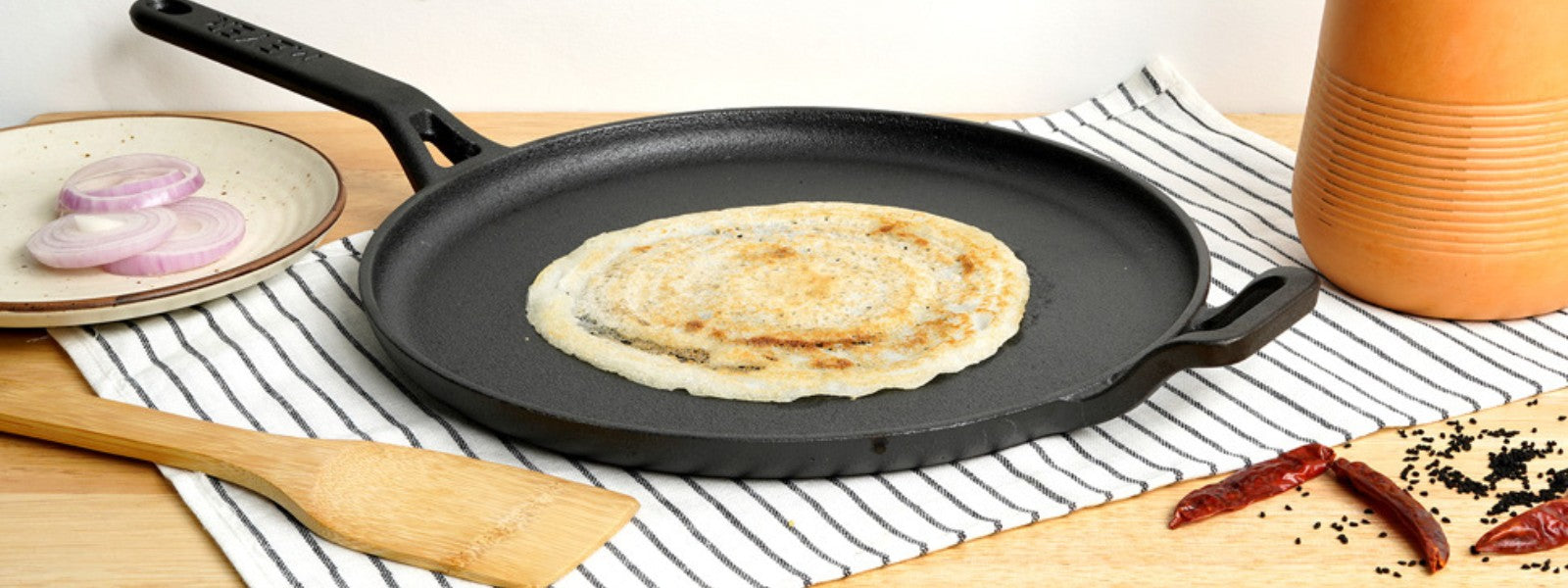
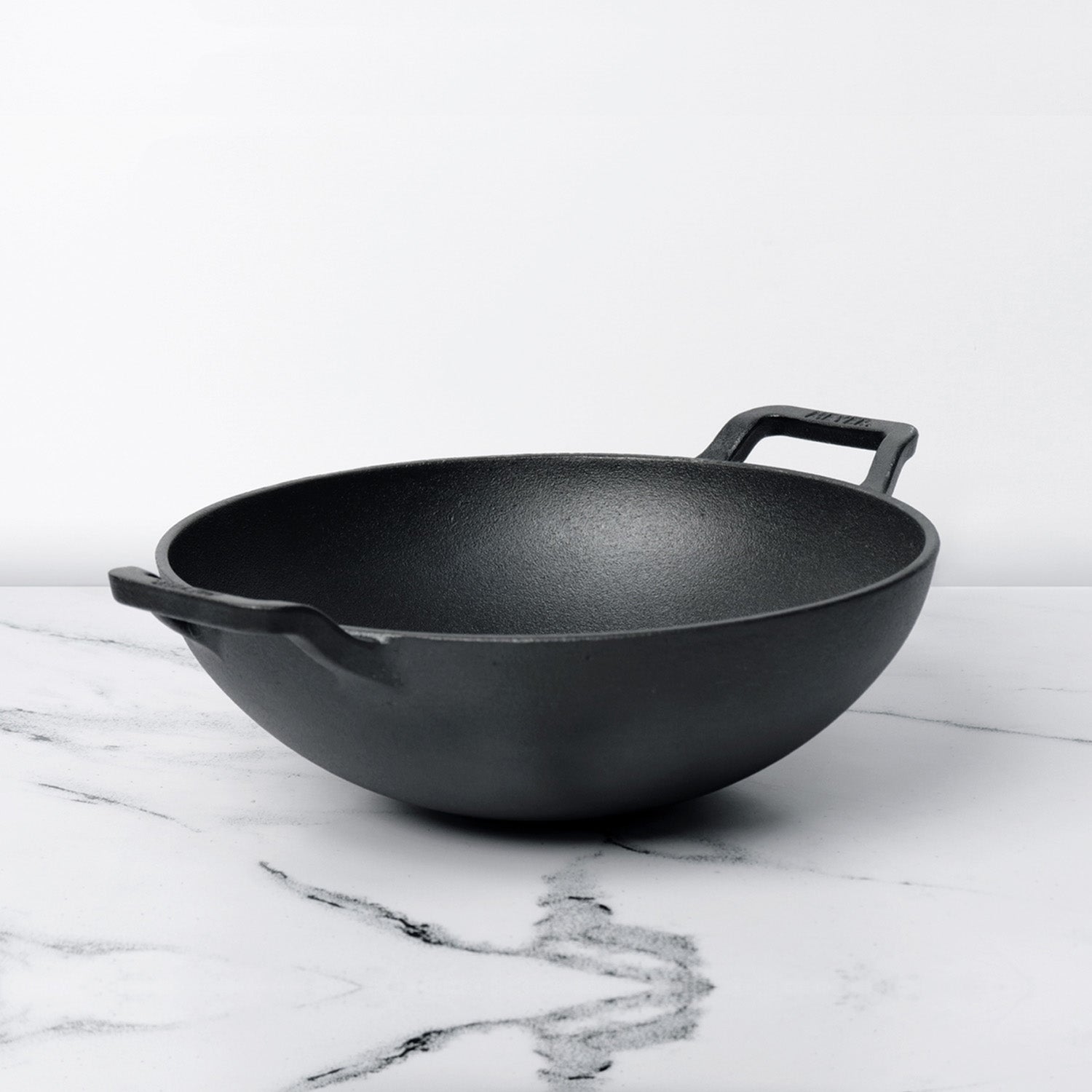
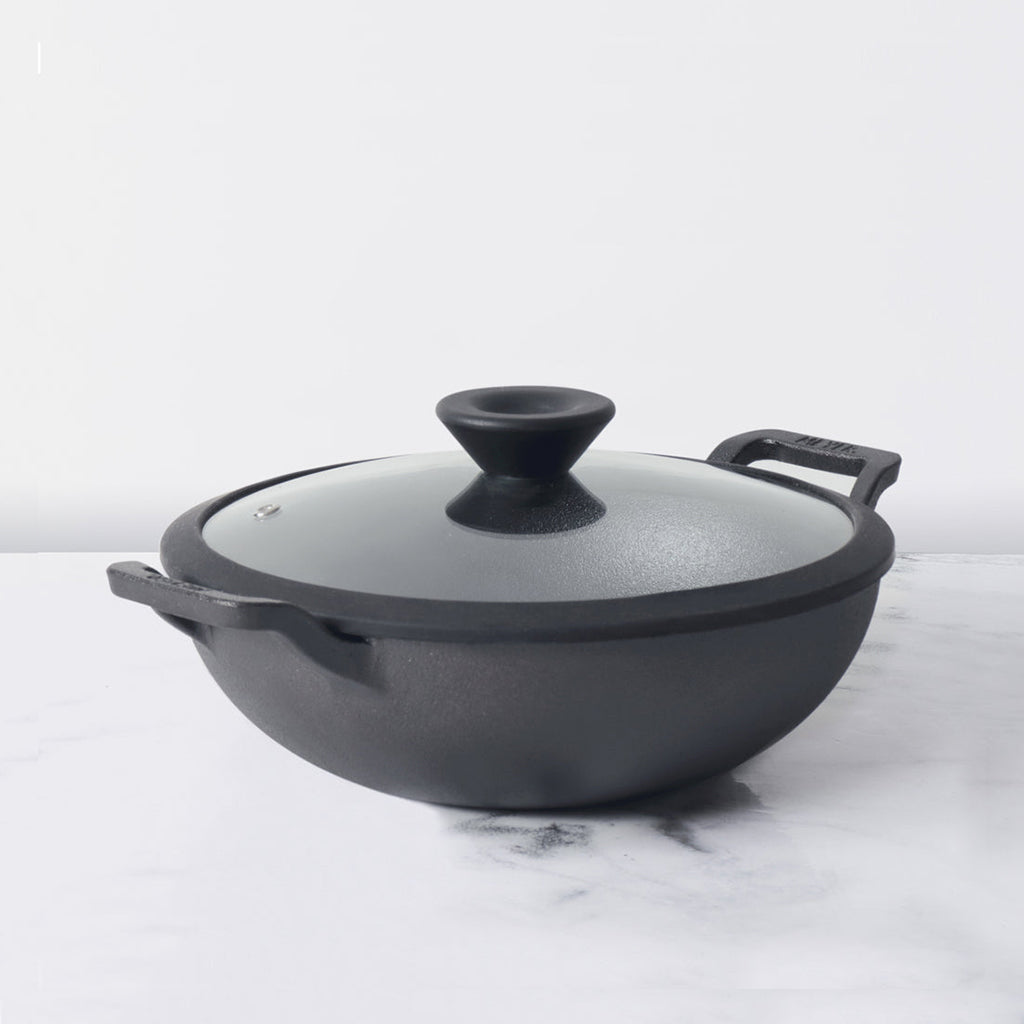




Leave a comment